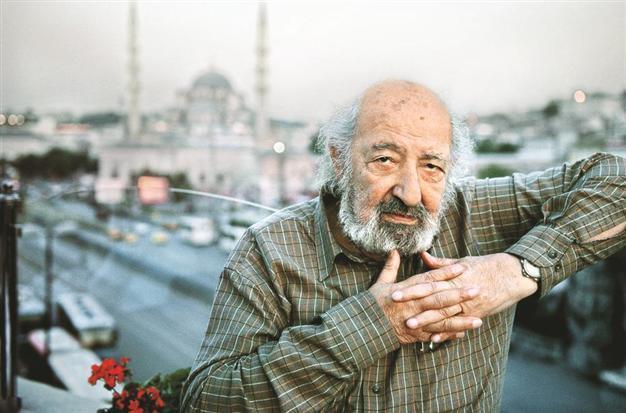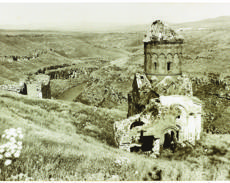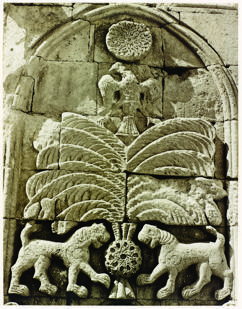Ara Güler's Anatolia in US gallery
ISTANBUL

The pieces on display are part of a set of 53 photographs of architectural monuments, taken by Ara Güler.
Throughout his career, acclaimed and prolific photojournalist Ara Güler, Turkey’s internationally acclaimed photographer, has taken more than 800,000 photographs documenting Turkish culture and important historical sites. Opening Dec. 14 at the Smithsonian’s Arthur M. Sackler Gallery, “In Focus: Ara Güler’s Anatolia” reveals a selection of his never-before-shown works of Anatolian monuments, taking the viewer on a historical journey through the lens of one of the world’s most legendary photojournalists.
Running through May 4, 2014, 21 the work on display also challenge Güler’s definition of himself as a photojournalist, not an artist, and engage visitors in a critical debate about whether photography is a form of art or a means of documentation.
The exhibition was curated by students from the Johns Hopkins University’s Program in Museums and Society, under the supervision of Nancy Micklewright, the Head of Scholarly Programs and Publications at the Freer and Sackler Galleries. During the 2013 spring semester, the students worked with the archival collection to develop an exhibition proposal, along with labels, programming ideas and Web content.

Bearing witness to the now lost Turkey of the 1950s and 1960s, Güler assembled a rich and diverse body of work. Extracted from his extensive portfolio, “In Focus: Ara Güler’s Anatolia” features photographs of Seljuk, Armenian and Ottoman monuments across Anatolia, the Asian mainland of Turkey.
A form of magicUsing a variety of vantage points, dramatic lighting and strong contrasts, Güler expressed a unique and instantly recognizable photographic point of view. He was quoted as saying, “I believe that photography is a form of magic, by means of which a moment of experience is seized for transmission to future generations” (Ara Güler: A Photographical Sketch of Lost Istanbul, Dünya Yayınları, 1994).
Güler’s ability to capture fleeting moments and his fascination with storytelling are evident in several of the pieces on display, such as “Gök Medrese” (school), which captures a child running past a ruined façade, an open doorway allowing a glimpse of a larger world beyond. Since 1965, when these images were made, some of the historic buildings Güler depicts have been extensively renovated to become tourist sites and some have deteriorated even further—in both cases, Güler’s photographs provide a poignant and valuable record of a moment in time.
The exhibition will also feature a short video, “Ara Güler: A Lifetime Achievement” by FotoTV (2010), which will allow visitors to hear Güler’s own thoughts on photojournalism, art and his career.
 A set of 53 photographs
A set of 53 photographs Güler (b. 1928) took his first photojournalism jobs at local newspapers while studying economics at Istanbul University in 1950. In 1955, he became head of the Photography Department at Hayat (Life) magazine, and soon after began working for international media. He photographed for Turkish publications such as Yeni Istanbul (New Istanbul) and Hayat magazine, and major international publications, including Time Life, Paris Match, and Smithsonian magazine. In the 1960s, he worked alongside acclaimed photojournalist Henri Cartier-Bresson at Magnum Photos. Now 85, Güler continues to live and work in Istanbul.
The pieces on display are part of a set of 53 photographs of architectural monuments donated to the Freer and Sackler Archives in 1989 by Raymond Hare, U.S. Ambassador to Turkey (1961–1965). The collection of photographs was selected to reflect Hare’s lifelong interest in the architecture of the region and was presented to him by his colleagues upon his departure from Turkey.
The exhibition has been made possible through a grant from The Andrew W. Mellon Foundation to the Johns Hopkins University in support of its Program in Museums and Society. The Arthur M. Sackler Gallery and the adjacent Freer Gallery of Art are in the National Mall in Washington, D.C. Hours are from 10 a.m. to 5:30 p.m. every day (closed Dec. 25), and admission is free.
For more information visit www.asia.si.edu

 Bearing witness to the now lost Turkey of the 1950s and 1960s, Güler assembled a rich and diverse body of work. Extracted from his extensive portfolio, “In Focus: Ara Güler’s Anatolia” features photographs of Seljuk, Armenian and Ottoman monuments across Anatolia, the Asian mainland of Turkey.
Bearing witness to the now lost Turkey of the 1950s and 1960s, Güler assembled a rich and diverse body of work. Extracted from his extensive portfolio, “In Focus: Ara Güler’s Anatolia” features photographs of Seljuk, Armenian and Ottoman monuments across Anatolia, the Asian mainland of Turkey. A set of 53 photographs
A set of 53 photographs